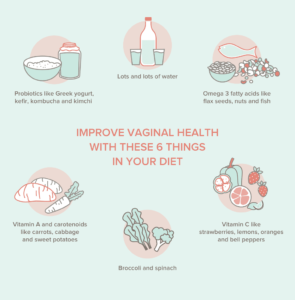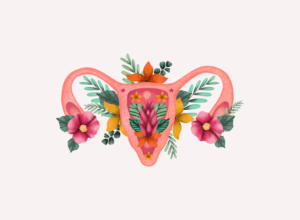Vaginal Health-
The vagina is home to a complex ecosystem of microorganisms, collectively referred to as the vaginal microbiota. These microorganisms play a crucial role in maintaining the overall health of the vagina and contribute to the well-being of the reproductive system. Here are some key details about vaginal bacteria and their importance:
1. Composition of Vaginal Microbiota:
– The predominant bacteria in the vagina are lactic acid-producing bacteria, with the most common species being Lactobacillus. These bacteria help maintain an acidic environment in the vagina, which is essential for preventing the overgrowth of harmful microorganisms.
2. Acidic pH Balance:
– The normal pH of the vagina is mildly acidic, ranging from 3.8 to 4.5. This acidity is primarily due to the production of lactic acid by Lactobacillus bacteria. The acidic pH helps create an inhospitable environment for pathogenic bacteria and yeast, reducing the risk of infections.
3. Protection Against Infections:
– Lactobacillus bacteria produce substances such as hydrogen peroxide and bacteriocins that have antimicrobial properties. These substances help to inhibit the growth of harmful bacteria and protect against infections, including bacterial vaginosis and urinary tract infections.
4. Maintenance of a Healthy Microbial Balance:
– A balanced and diverse vaginal microbiota is crucial for overall health. Disruptions in this balance, such as a decrease in the number of Lactobacillus bacteria, can lead to an overgrowth of harmful microorganisms and increase the risk of infections.
5. Prevention of Sexually Transmitted Infections (STIs):
– A healthy vaginal microbiota may provide some level of protection against sexually transmitted infections. Lactobacilli contribute to the defense against STIs by maintaining an acidic environment and producing substances that inhibit the growth of pathogens.
6. Pregnancy and Birth Outcomes:
– The composition of the vaginal microbiota can influence pregnancy outcomes. Some studies suggest that certain Lactobacillus species may play a role in preventing preterm birth and protecting against infections that could affect the fetus.
7. Hormonal Influence:
– Hormonal changes, such as those associated with the menstrual cycle, pregnancy, and menopause, can impact the composition of the vaginal microbiota. Lactobacilli are often influenced by estrogen levels, and their abundance may fluctuate during different stages of a woman’s reproductive life.
Understanding the importance of the vaginal microbiota highlights the significance of maintaining a healthy microbial balance for overall reproductive and gynecological health. Factors such as antibiotic use, hormonal changes, sexual activity, and personal hygiene practices can influence the vaginal microbiota, and maintaining a healthy lifestyle is crucial for supporting these beneficial bacteria. If there are concerns about vaginal health, it is advisable to consult with a healthcare professional for appropriate guidance and care.
Maintaining good vaginal hygiene
Maintaining good vaginal hygiene is essential for overall health and well-being. However, it’s important to note that the vagina is a self-cleaning organ, and excessive or harsh cleaning practices can disrupt the natural balance of the vaginal microbiota and lead to irritation or infections. Here are some guidelines for maintaining proper vaginal hygiene:
1. Gentle Cleansing:
– Use a mild, unscented soap to clean the external genital area. Avoid using harsh soaps, douches, or feminine hygiene products with strong fragrances, as they can disrupt the natural pH balance and lead to irritation.
2. Water Rinse:
– The vagina is self-cleaning, and a simple water rinse during a shower is often sufficient to maintain cleanliness. Avoid introducing soaps or cleansers into the vagina itself, as this can disturb the natural flora.
3. Wipe from Front to Back:
– Always wipe from front to back after using the toilet to prevent the spread of bacteria from the anal area to the vagina, reducing the risk of urinary tract infections.
4. Cotton Underwear:
– Wear breathable, cotton underwear to promote proper airflow and reduce moisture. Avoid tight-fitting underwear made from synthetic materials, as they can trap moisture and create a favorable environment for bacterial overgrowth.
5. Avoid Irritants:
– Steer clear of harsh chemicals, dyes, and perfumes in personal care products, including laundry detergents and fabric softeners. These substances can cause irritation and disrupt the natural balance of the vaginal environment.
6. Practice Safe Sex:
– Use barrier methods (condoms) during sexual activity to reduce the risk of sexually transmitted infections (STIs). Additionally, clean the genital area before and after sexual activity.
7. Stay Hydrated:
– Drink an adequate amount of water to stay hydrated. Proper hydration supports overall bodily functions, including those related to the reproductive system.
8. Regular Check-ups:
– Schedule regular gynecological check-ups to monitor and maintain reproductive health. If you notice any unusual symptoms, such as itching, discharge, or discomfort, consult a healthcare professional promptly.
9. Healthy Diet:
– Eating a balanced and nutritious diet supports overall health, including the health of the reproductive system. A diet rich in fruits, vegetables, and probiotics can contribute to a healthy vaginal microbiota.
10. Avoid Douching:
– Douching is not recommended, as it can disrupt the natural balance of the vaginal flora and increase the risk of infections. The vagina is self-regulating, and routine douching is generally unnecessary.
It’s important to remember that every individual is different, and what works for one person may not be suitable for another. If you have specific concerns about vaginal hygiene or experience persistent symptoms, it’s advisable to consult with a healthcare professional for personalized advice and guidance.





